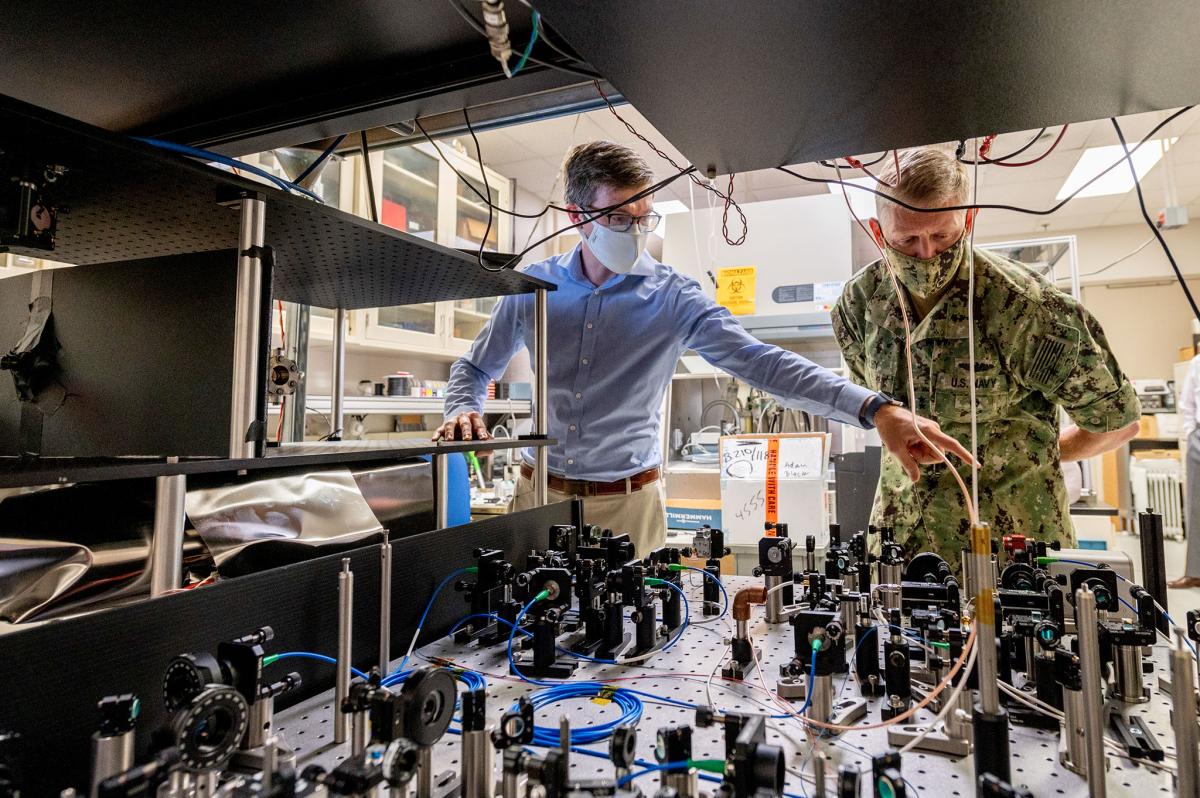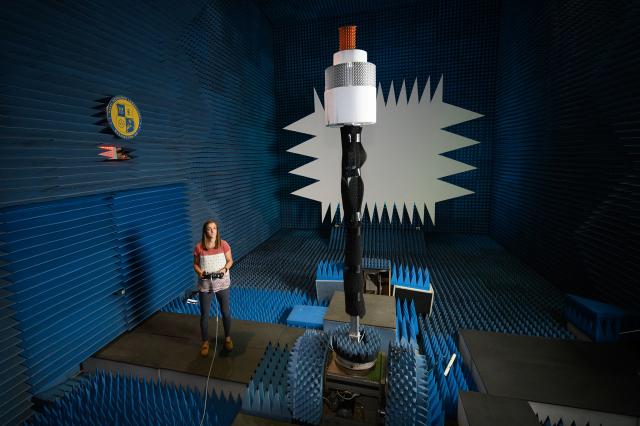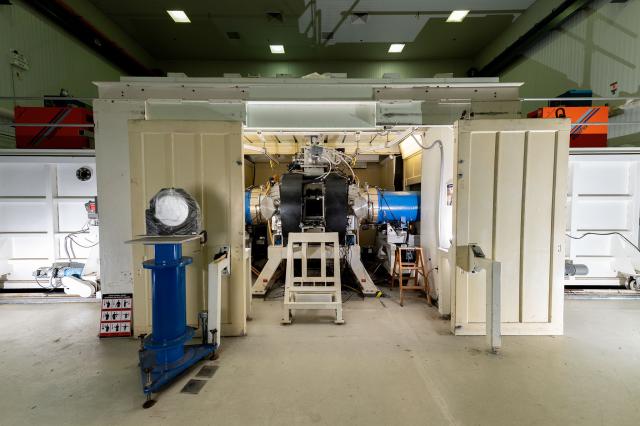By Rear Admiral Lorin Selby, U.S. Navy

Proceedings: Can you describe the Navy’s efforts in quantum computing and the potential implications for this technology?
Selby: We are in a new era of change and capabilities that rivals some of humanity’s greatest epoch moments—equivalent to the advent of agriculture, or the Industrial Revolution—moments where new technologies revolutionized everything. The arrival of quantum technologies in the near future is among those groundbreaking capabilities emerging today (along with artificial intelligence (AI), autonomy, synthetic biology and more). Quantum capabilities bring enormous promise for naval applications, from improved timekeeping and navigation for GPS-denied platforms, to potential increases in computational speed in solving complex logistics problems. The application space for quantum sensing and quantum information science and technology is broad.
Quantum computing is an emerging technology that derives its power from the properties of large-scale entangled quantum systems. In the future, this technology could provide unique advantages over its classical counterparts in certain applications of importance to DoD—including the discovery of new materials and chemical compounds with unique properties and finding solutions of complex optimization problems such as algorithm development from large data lakes.
Historically, the Office of Naval Research (ONR) has invested in quantum science, partnering with the academic community, since the organization’s inception. At least seven Nobel prizes have been awarded to quantum researchers supported by ONR basic science funding—for work ranging from the invention of the laser to atomic spectroscopy to laser cooling and trapping.
ONR is at the forefront of moving quantum technologies to higher readiness levels for fleet deployment. Future quantum sensors and clocks, for instance, have the potential to revolutionize the way positioning, navigation, and timing (PNT) is performed on DoD platforms. Today, we largely rely on signals from GPS satellites for position and time. A future vision for quantum-enabled PNT includes advanced clocks, gyros, and accelerometers working together to provide a set-and-forget capability where we can initialize the system with accurate data and maintain quality PNT throughout the mission. Our researchers are taking early prototype quantum-enabled systems into relevant environments today to push the envelope and expose the hurdles that still remain.
Proceedings: The Navy and Marine Corps have talked a lot about the possibility of additive manufacturing to shore up problems such as lack of spare parts and emergent repairs underway. How close is ONR to handing off a way forward for the fleet?
Selby: Additive manufacturing is a long-standing priority for the Navy and Marine Corps—and ONR is working to advance groundbreaking capabilities in 3D printing, from manufacturing difficult-to-find replacement parts for weapons or vehicles, to creating shelters for Marines in theater.
Additive manufacturing allows us to open up design and redefine what’s possible for industrial manufacturing. It is the foundation on which we can build a whole new vision and, like quantum, when we get it where it needs to be, it will be revolutionary for our fleet and force. Picture a scenario where a maintenance depot on a military base needs a certain part to finish a repair job. Unfortunately, the part is obsolete and no longer available from suppliers. No problem. The technician on duty simply loads a digital file containing specs about the original part into a specialized 3-D printer, which then lays down ultra-thin layers of metal atop each other until a new part is produced on the spot. This process could dramatically reduce the cost, time, and materials needed to manufacture new parts.

Anna Stumme, an electrical engineer at the Naval Research Lab, tests an antenna that was created
using 3D-printing methods inside an anechoic chamber at the Lab in Washington, DC, in 2019.
Traditionally, many additive-manufactured parts have been largely made from plastics. These parts were useful for a variety of civilian applications but lacked the required material properties for many demanding military needs. In recent years, however, high-precision metal has become a more attractive option. Think titanium, aluminum, and stainless-steel alloys. During this process, electron beams or lasers are used to melt layers of metallic powder or wire into a desired shape. One potential benefit is that manufacturers can tailor a part in ways not possible with traditional metal casting. For example, a turbine blade could be optimized on one end for strength and on the other for heat resistance.
Ultimately, we would like to design 3D printers not only for shore-based facilities, but also for use on board ships and submarines operating in tough sea conditions. Think of how valuable that would be in saving time alone. Instead of waiting days or weeks for a new part, a maintenance team could manufacture one in hours. These kinds of capabilities will be increasingly important as we work to support emerging Navy and Marine Corps operational concepts.
Proceedings: Basic research as a practice is becoming rarer in the civilian world. How are those changes in the civilian world affecting how ONR considers where to invest research dollars?
Selby: Decisive technology is the foundation of superior naval power. And basic research is the foundation of breakthrough technologies. This is why ONR is committed to facilitating basic research funding. Basic research is foundational to ensuring our Sailors and Marines are never in a fair fight—they must have the dominant edge to deter and prevent conflict, and, if necessary, fight, win, and come home safe.
We are in the midst of great power competition. Our adversaries are gaining on us by making rapid technological advancements. The character of war is changing, and there are lower barriers to entry. Just look at the breathtaking pace of innovation in areas like AI, autonomy, robotics, and big data, to name just a few. These breakthroughs would not have happened were it not for basic research.
To maintain our strategic and technological edge, it is crucial that we continue to invest heavily in basic research—not just for the immediate problems of today but also for the future capabilities of the Navy and Marine Corps of tomorrow. Sometimes, the payoff from basic research does not come right away. Look at GPS, cell phone technology, and the Internet. These technologies took years to develop and bear fruit. In fact, many of the awesome systems used by the Navy and Marine Corps now took decades to become reality. The trick is to balance short-term needs with long-term vision.
That is why we must ensure our scientific partners have the tools they need to carry out cutting-edge basic research that secures our nation’s technological advantage. We are committed to being responsible stewards of taxpayer dollars, and to cultivating the most diverse and effective S&T investment portfolio possible. But we must remember that basic research is a crucial step in the discovery of new knowledge—knowledge that can result in innovative applied research and advanced technology developments. Not all basic research turns into a widget, but all basic research contributes to our continued dominance.
Proceedings: Lasers are a big topic with several significant naval applications. When does the Navy foresee a shipboard laser capable of destroying incoming antiship missiles or enemy aircraft? Will they require new ship classes, or can the integrated power systems on current ships handle them? How is free-space optical communication (laser-based comms) progressing? Blue-green lasers have shown promise for 40 years in submarine tracking and underwater communication—how close are we?
Selby: These are excellent questions and we have answers to them that are encouraging, and undoubtedly sobering for our potential adversaries. However, there are also levels of detail that I’m not able to address in a publication, even one as prestigious as Proceedings! What I can tell you is that our longstanding efforts in lasers—starting back when ONR sponsored Charles Townes and the early Microwave Amplification by Stimulated Emission of Radiation (MASER) work in the 1950s—are reaching high levels of fidelity.

An argon-flouride laser built by the Naval Research Laboratory. (U.S. Navy)
Today, the U.S. Navy is expanding its operational experience with the next generation of directed-energy weapon (DEW) systems, including high-energy laser programs like the Solid-State Laser–Technology Maturation (SSL-TM) Laser Weapon System Demonstrator (LWSD) on the USS Portland (LPD-27). The work of some truly brilliant minds within the Naval Research Enterprise and the hard work of the Portland crew resulted in the successful integration and testing of this weapon system—including the test that downed an unmanned aerial vehicle (UAV). In the mid-to-long term, the Navy is working to mature the DEW system to take on more advanced threats for integrated air and missile defense (IAMD), but the initial tactical capabilities are here and operationally relevant today. The Portland tests have shown, among other things, that we do not need entirely new ship classes to power, control, and cool DEW systems. Finally, to your question on optical communications: As with LWSD, there is much good news, and still more work to be done. We are working hard to support the CNO’s vision to develop these capabilities, and I think we are on the right path.
Proceedings: What is ONR’s role in developing and perfecting unmanned/autonomous air/surface/subsurface vehicles? What do you see as the next big milestone?
Selby: ONR, and indeed the Naval Research Enterprise as a whole (ONR, the Naval Research Lab, ONR Global and PMR-51), is working hard on this question across the board. Our work encompasses everything from cutting-edge sensors, to developing new materials, to enabling new swarming capabilities, to advancing manned-unmanned teaming and building confidence in the tools. We just did some advanced tests of multiple UxS in the Unmanned Integrated Battle Problem (IBP-21) exercise that was led by the U.S. Pacific Fleet, featuring multiple ONR-developed capabilities. We got stuff into actual operational use, got platforms wet and dirty, and allowed the operators to see them and use them in real time. That was huge. The important thing to remember is that it is not really about the platform. The platforms are a means to an end. In some cases, they might be viewed as attritable or expendable—we can use them and, if need be, lose them without losing any sleep because we got the intelligence we needed, or we accomplished the mission in any number of other ways, without endangering sailors and Marines. Now, when you get to the levels and sizes of medium-endurance unmanned surface vessels, such as Sea Hunter and Sea Hawk, for instance, or even bigger platforms, of course we are not viewing those as “throw-away after use.” But if necessary, we could. I do not view progress in terms of a next big milestone. Rather, we need to keep focused across the board—testing, learning, getting systems wet or dirty, and developing operator confidence in new capabilities. There isn’t a finish-line, per se, but an ongoing process to keep getting better.
Proceedings: Does the Department of the Navy need an overarching educational strategy to manage the intellectual talent needed to build and maintain a qualitative technology edge? Is the Department attracting, advancing, and retaining enough STEM talent—both military and civilian?
Selby: I think we are getting there. I am encouraged by the progress we have made in the last year, but frankly, there is still a way to go. As Chief of Naval Research, this is one of my top priorities. I have been knocking on doors and turning over rocks looking for new ways to find, develop, and maintain the workforce of tomorrow, making sure our warfighters have the best workforce in the world behind them. And what is encouraging is that wherever I go, I am met with open arms and a shared sense that we have to act, now.
In the past, some folks viewed STEM as a small, nice-to-have naval effort, almost a nod but not much more. Today, no one who is serious about the future thinks like that. STEM is a national security issue. So we are upping our education outreach, from elementary schools to professional development, because intellectual stagnation is not an option. We need to find the best minds in the country, and that means doing better to expand our reach into regions and demographics that have not been properly represented in STEM fields. That means reinvigorating our partnerships with historically black colleges and universities/minority institutions, which we are actively doing. That means trying new STEM efforts, which I, as the Naval STEM Executive, view as one of my most urgent priorities.
To that end, as just one example, I hired a senior executive service professional to lead the Naval STEM program, because we needed that level of visible commitment. And we have increased the resources allocated to Naval STEM, which is vital. While there are lots of efforts the STEM folks are doing, one in particular I have to mention: We have launched a cool new program called Naval Horizons, which is having great impact. Students watch a video of a subject-matter expert describing their job and area of expertise—be that lasers, oceanography, or whatever else. The student then writes a very short paper on the subject, imagining where that capability could impact the future, and they get a small stipend for their work. We did the first round with college students and have just launched one for high school students—and the results have been very promising.
Finally, and importantly, education is a loop. Like research itself, there is no end point, and it is not a solo effort. To get it right involves ongoing and close partnership with naval educators, including the Naval Academy, the Naval War College, and the Naval Postgraduate School. Research and experimentation are vital for the future force and fleet, but so too will be having the right leaders, trained to think outside the box, who will be able to use the capabilities we are producing. We must have fleet leaders and tacticians who have gone through rigorous academic work and are capable of thinking about how to employ new technologies and capabilities. So, our partnerships with academic institutions are extremely important.
No comments:
Post a Comment